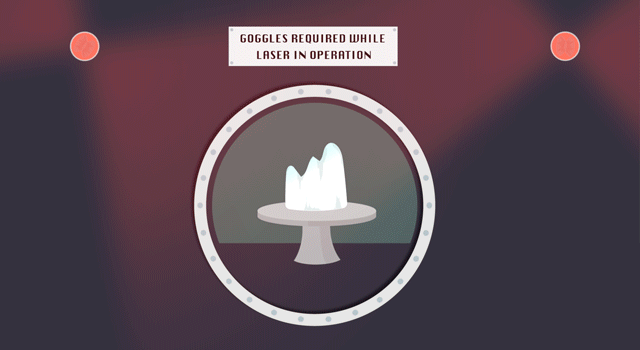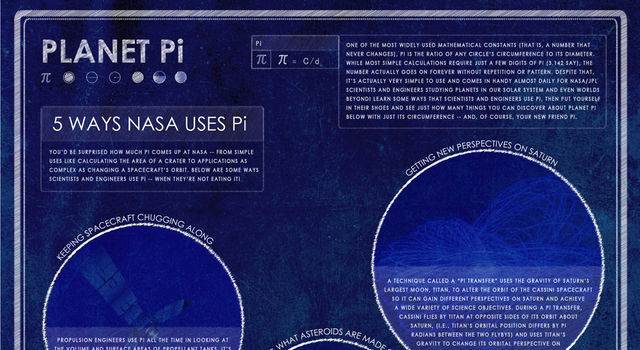Problem Set
Cloud Computing: A 'Pi in the Sky' Math Challenge
Overview
The "Pi in the Sky" math challenge gives students a chance to take part in recent discoveries and upcoming celestial events, all while using math and pi just like NASA scientists and engineers. In this problem from the set, students use the mathematical constant pi to calculate the amount of potential rainfall in a cloud.Materials
Background
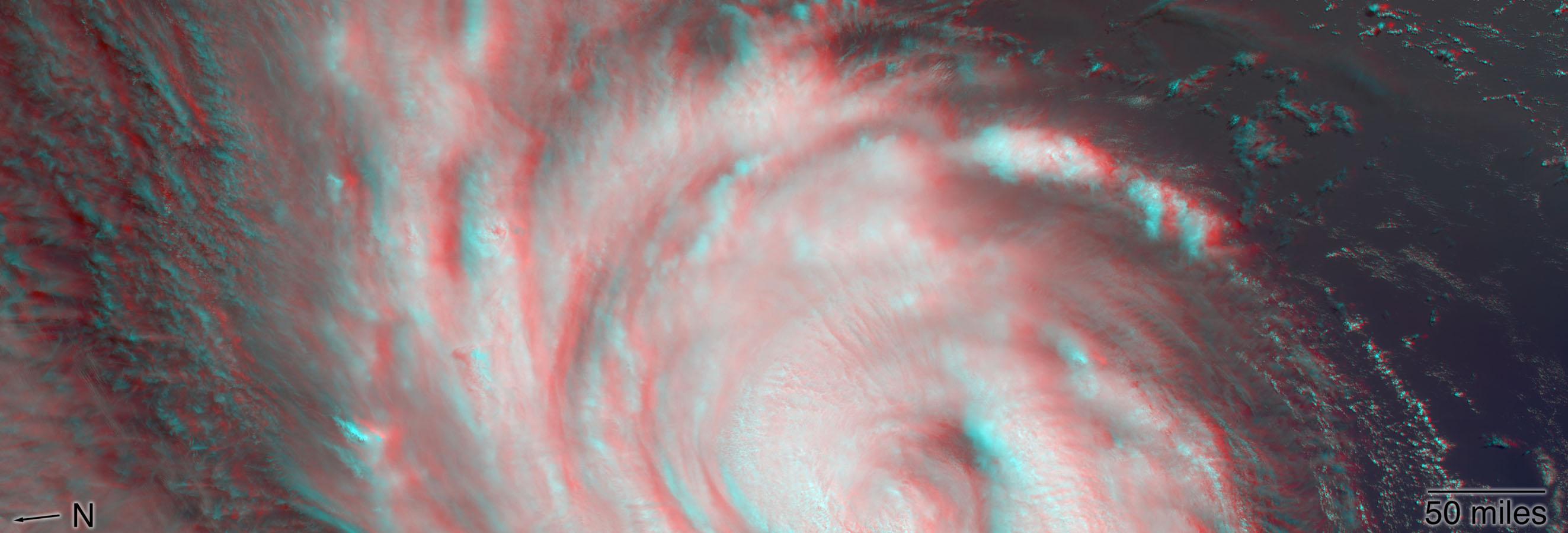
This 3D image from the MISR instrument on NASA's Terra satellite shows Hurricane Florence as it approached the eastern coast of the United States on Sept. 13, 2018. Image credit: NASA/GSFC/LaRC/JPL-Caltech, MISR Team | › Full image and caption
The Terra satellite uses the nine cameras on its Multi-Angle Imaging SpectroRadiometer, or MISR, instrument to provide scientists with unique views of Earth, returning data about atmospheric particles, land-surface features and clouds. Estimating the amount of water in a cloud and the potential for rainfall is serious business. Knowing how much rain may fall in a given area can help residents and first responders prepare for emergencies like flooding and mudslides. In Cloud Computing, students can use their knowledge of pi and geometric shapes to estimate the amount of water contained in a cloud.
Procedures
Cloud Computing
The MISR instrument on NASA’s Terra satellite has nine cameras that view Earth from different angles to study features on the surface and in the atmosphere in 3D. One of MISR’s tasks is to collect measurements of clouds, which are full of liquid water or ice. Scientists can use the measurements to estimate how much water is in a cloud. Imagine MISR flies over a cloud that from directly overhead looks like a circle, 10 km across. From the side, it looks like a soup can, indicating it’s roughly the shape of a right cylinder.
Given that the cloud’s top and height measure 16 km combined, calculate the approximate volume of the cloud in cubic kilometers.
Given the liquid water content of a typical puffy cumulus cloud, calculate the total amount of water in the cloud.
If all the water in the cloud fell as rain, how many Olympic size swimming pools could it fill?
Cumulus cloud liquid water content = 500,000 kg/km3
Olympic swimming pool volume = 2,500 m3
Water density = 1,000 kg/m3
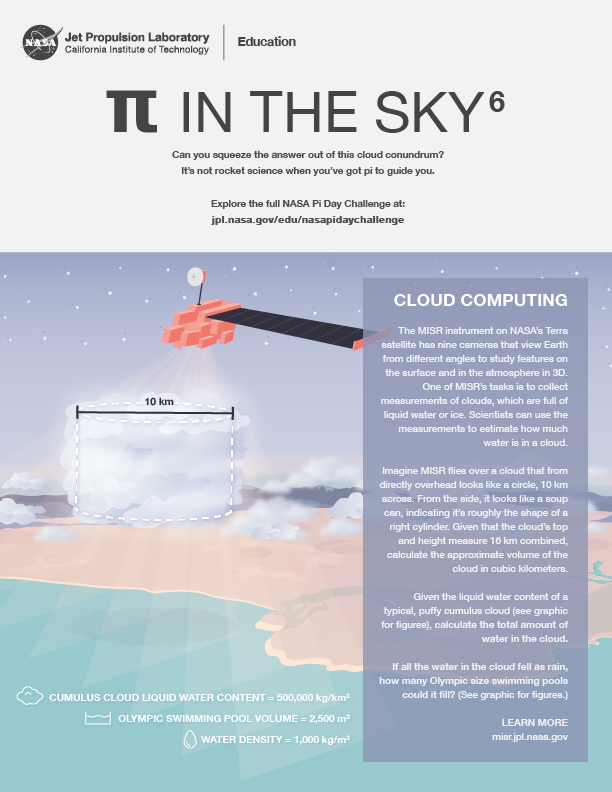
Image credit: NASA/JPL-Caltech/Kim Orr | › Download PDF
Assessment

Image credit: NASA/JPL-Caltech/Kim Orr | + Expand image
Extensions
Participate
-

Pi Day Challenge Lessons
Here's everything you need to bring the NASA Pi Day Challenge into the classroom.
Grades 4-12
Time Varies
-

Slideshow: NASA Pi Day Challenge
The entire NASA Pi Day Challenge collection can be found in one, handy slideshow for students.
Grades 4-12
Time Varies
-
Pi Day: What’s Going ’Round
Tell us what you’re up to this Pi Day and share your stories and photos with NASA.
Join the conversation and share your Pi Day Challenge answers with @NASAJPL_Edu on social media using the hashtag #NASAPiDayChallenge
Blogs and Features
-
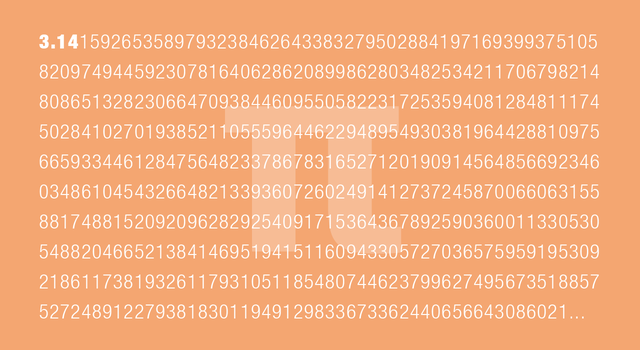
How Many Decimals of Pi Do We Really Need?
While you may have memorized more than 70,000 digits of pi, world record holders, a JPL engineer explains why you really only need a tiny fraction of that for most calculations.
-

Slideshow: 18 Ways NASA Uses Pi
Whether it's sending spacecraft to other planets, driving rovers on Mars, finding out what planets are made of or how deep alien oceans are, pi takes us far at NASA. Find out how pi helps us explore space.
Related Activities
-
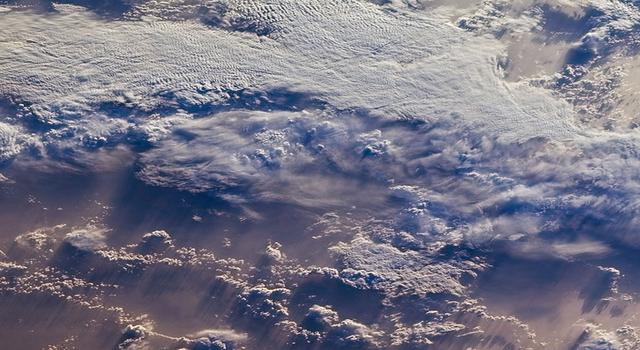
The Sky and Dichotomous Key
Students learn about cloud types to be able to predict inclement weather. They will then identify areas in the school affected by severe weather and develop a solution to ease the impacts of rain, wind, heat or sun.
Grades K-3
Time 30 mins - 1 hr
-

Precipitation Towers: Modeling Weather Data
This lesson uses stacking cubes as a way to graph precipitation data, comparing the precipitation averages and seasonal patterns for several locations.
Grades K-5
Time 30 mins - 1 hr
-
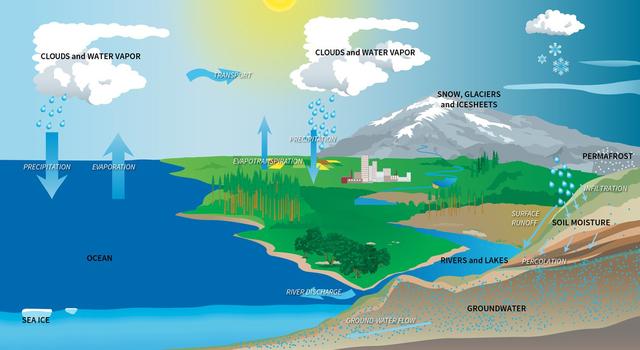
Modeling the Water Budget
Students use a spreadsheet model to understand droughts and the movement of water in the water cycle.
Grades 5-8
Time 30 min - 1 hr
-
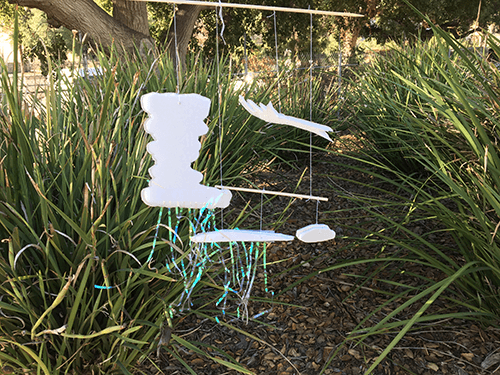
Make a Cloud Mobile - NASA SpacePlace
This mobile of feathery clouds will twist and turn in a gentle breeze. It even includes rain clouds with sparkling showers!
Grades 3-6





